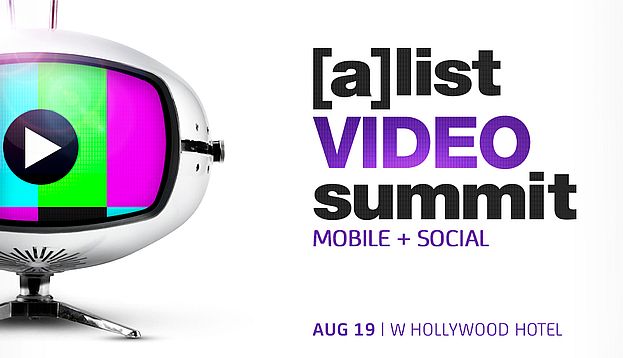The [a]list Video Summit yesterday was packed full of insights from industry leaders, talking about video, mobile, social, and the intersections among those areas. For game marketers in particular, there useful takeaways a-plenty.
Make your games spectator friendly
It’s clear that video is taking over millennial viewing habits, and so if you want your games to have the best reach they need to be spectator-friendly. Games like multiplayer online battle arenas (MOBAs) have created enormous audiences of streaming viewers, and that’s not by accident. Savvy game publishers are putting in special spectator modes, or at least making sure that the game both looks good and is interesting when watched by non-players. It’s not just streaming, either short video clips are easier than ever to produce (consoles like the Xbox One and PlayStation 4 make it easy), but it certainly helps to tweak the game to make this both easy and impressive.
Even mobile games can get in on the fun, with titles like Vainglory attracting big crowds. Game marketers have to press for this, though, and work hard with product development to make this happen. It’s not just action games, either some creative thinking can come up with interesting visuals to turn into videos for nearly any game. Think of those billions of Minecraft video views that happen every month… and how important that is to the continuing success of that decidedly non-action game.
Influence the influencers
The Video Summit yesterday once again showed the growing importance of influencers in activating and engaging an audience, and in driving purchase decisions. It’s not an accident that the majority of the top YouTubers are gamers there’s a huge appetite for game content on YouTube, Twitch, and elsewhere on video and social media. The influencers are the key to millions of fans, and game marketers need to focus on influencers. Sure, you can wait around to see if your game gets discovered by an influencer, but that hardly seems like a winning strategy.
Game marketers should be building a list of influencers who love games, and what type of games and when you have a game that matches some influencer’s tastes, then work with them to see if they want to showcase. Better still, game marketers should be building relationships with influencers in anticipation of the day when you can send that influencer your new game and get some great coverage for it.
Think mobile video for your game
Yes, video has been a terrific marketing tool for games for many years now, and it continues to be a great way to attract attention and drive fans to your game. Now, though, the nature of video distribution and consumption is changing, especially in key demographics. Mobile is more often where video is being seen, not on desktops. Mobile viewing sessions are often shorter, too. And DEFY Media pointed out a very key fact many video views are sequential. You get through one video, you check out the related one.
Game marketers need to be creating more videos, not fewer. Or maybe taking longer ones and creating multiple snippets from them. Don’t restrict yourself to 10-minute long extended gameplay features. Check out the various ways people are experiencing video, especially on mobile, and craft your video content according to where the potential audience exists and what they are looking for.
Consider all the platforms for video and social content
While Facebook is now a more important platform than ever (especially as it becomes a huge video platform to rival YouTube), you shouldn’t restrict your social and video content to that platform. It’s a bad strategy to try and drive your audience to one particular platform instead, you should go where they are. How do you even know your audience is on a platform until you give it a try Check out Twitter, Tumblr, Instagram, Vine, Snapchat, Vimeo, and all the other places you can find for a wide variety of media. As Microsoft has shown so eloquently, even podccasts can be a tremendously effective way to drive traffic for game fans.
Yes, this is going to be a big effort engaging properly on even one or two social media can be a lot of work let alone a half dozen or more. Perhaps multiple venues aren’t that useful for your game, but you won’t really know until you give them a good chance. And you should keep looking for new outlets, and try old ones again as time goes on the social environment is changing rapidly, and yesterday’s answers may not be valid tomorrow.
Engage your audience with content beyond the game
Yes, your game is a good chunk of content, even if it’s just a match-3 game there’s probably plenty of artwork there, if nothing else. Yet most games have much more than a surface layer of graphics there’s usually a backstory, and often characters, even with the simplest of games. With deeper, more complex games, there can be massive amounts of characters and backstory. All of that is grist for the marketer’s mill, especially in this day and age of content marketing.
Creative marketing should showcase the content associated with the game, or extend it, or create it. Look at what Barbie is doing as a vlogger now that’s building on a deep background, to be sure, but it’s fresh and engaging content for a doll. If Mattel can do that, certainly you can come up with something interesting for your game. Maybe it’s video, maybe it’s a documentary about the making of the game, maybe it’s a podcast or a novel or maybe all of the above.

